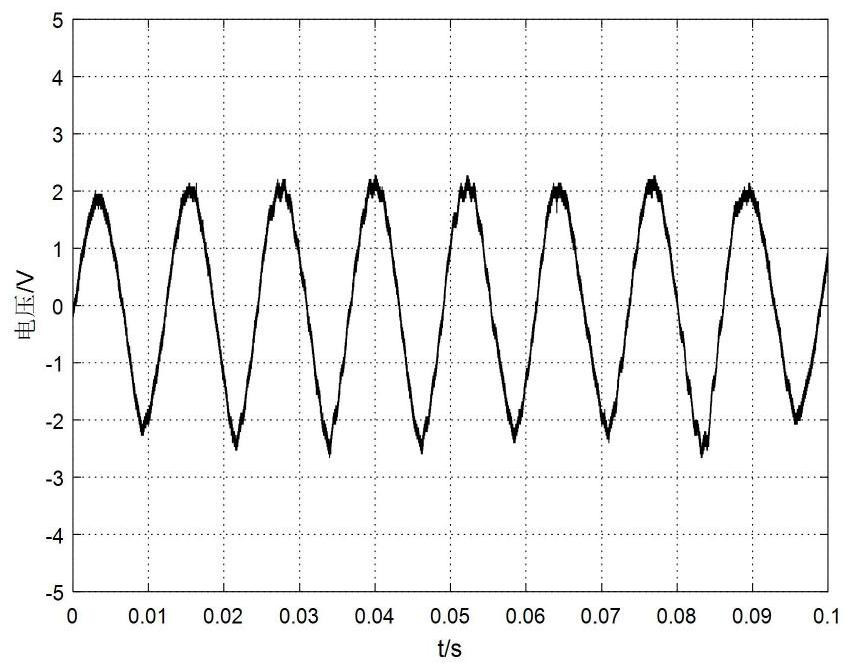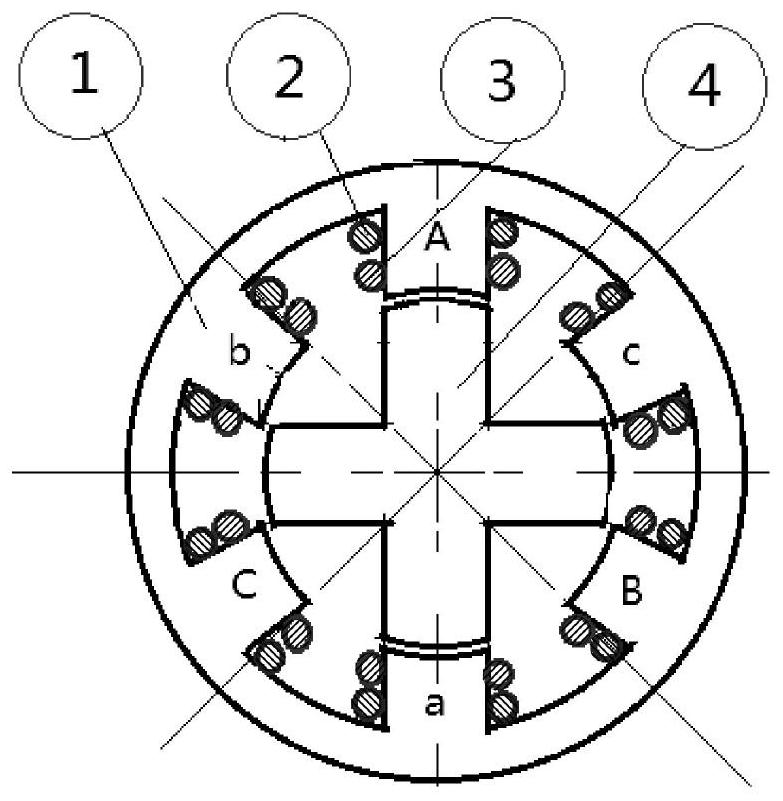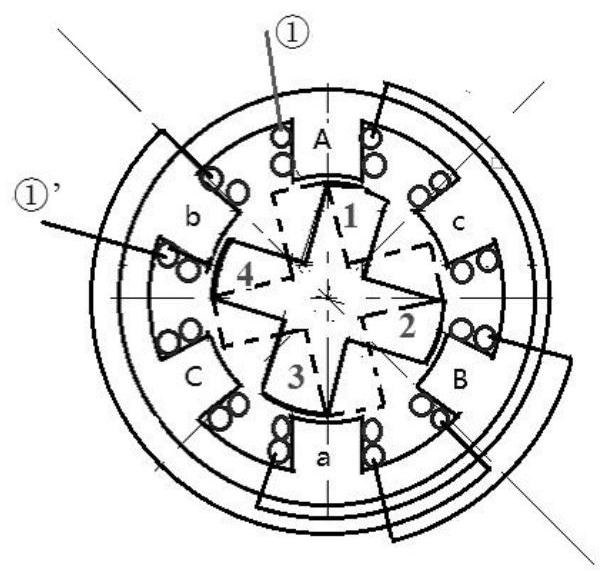Three-phase switched reluctance motor stator structure, corresponding motor and driving method
A reluctance motor and three-phase switch technology, applied in the direction of magnetic circuit shape/style/structure, structural connection, electric components, etc., can solve problems such as increasing the use cost of switched reluctance motors, affecting the wide application of motors, and complicated control
- Summary
- Abstract
- Description
- Claims
- Application Information
AI Technical Summary
Problems solved by technology
Method used
Image
Examples
Embodiment 1
[0034] like figure 2 As shown, a stator structure of a three-phase switched reluctance motor includes a stator core 1 and a new three-phase winding. The number of pole pairs of the stator core 1 is 1, and has six slots evenly distributed along its circumferential direction. The three-phase winding includes six first coils 2 and six second coils 3 (twelve winding coils in total). A first coil 2 and a second coil 3 which are independent of each other are wound on the six slots of the stator core 1 . The parameters of the first coil 2 and the second coil 3 are the same. The parameters of the coil include the number of turns, material and wire diameter; the six slots of the stator core 1 are respectively defined as teeth A, teeth B, teeth C, teeth a, teeth b, and teeth c. The A tooth is set opposite to the a tooth; the B tooth is set opposite to the b tooth; and the C tooth is set opposite to the c tooth. A pole, B pole, and C pole have a 120° electrical angle difference in s...
Embodiment 2
[0044] A stator structure of a three-phase switched reluctance motor. The difference between this embodiment and Embodiment 1 is that the number of pole pairs of the stator core 1 is n, and the number of pole pairs n≥2. The stator core 1 has 6n tooth slots uniformly distributed along its circumferential direction. The 6n slots are equally divided into n groups; the 6 slots in the same group are evenly distributed along the circumferential direction of the stator core 1 . The n groups of alveoli are sequentially staggered by 60° / n. The 6 slots of the same group are wound with three-phase windings according to the description in Embodiment 1. The windings of the same phase on n sets of cogging slots are connected in series (that is, on n sets of cogging slots, ①-①’ windings are connected in series, ②-②’ windings are connected in series, and ③-③’ windings are connected in series).
Embodiment 3
[0046] like Figure 4 As shown, a three-phase low-pulsation torque switched reluctance motor includes a stator structure, a rotor core 4, a rotating shaft 5, a front end cover 6, a front end cover bearing 7, a frame 8, a rear end cover bearing 9, and a rear end cover 10. Position sensor 11, cooling fan 12, fan cover 13 and speed control system. The stator structure adopts a three-phase switched reluctance motor stator structure described in Embodiment 1 or 2. The two ends of the front end cover 6, the rear end cover 10 and the machine base 8 are respectively fixed. The outer rings of the front end cover bearing 7 and the rear end cover bearing 9 are respectively embedded in the middle parts of the inner surfaces of the front end cover 6 and the rear end cover 10 . Both ends of the rotating shaft 5 are respectively embedded in the inner rings of the front end cover bearing 7 and the rear end cover bearing 9 . The stator core 1 in the stator structure is fixed on the inner si...
PUM
 Login to View More
Login to View More Abstract
Description
Claims
Application Information
 Login to View More
Login to View More - R&D
- Intellectual Property
- Life Sciences
- Materials
- Tech Scout
- Unparalleled Data Quality
- Higher Quality Content
- 60% Fewer Hallucinations
Browse by: Latest US Patents, China's latest patents, Technical Efficacy Thesaurus, Application Domain, Technology Topic, Popular Technical Reports.
© 2025 PatSnap. All rights reserved.Legal|Privacy policy|Modern Slavery Act Transparency Statement|Sitemap|About US| Contact US: help@patsnap.com



